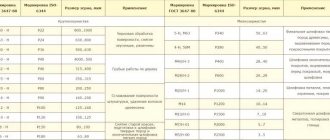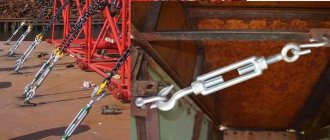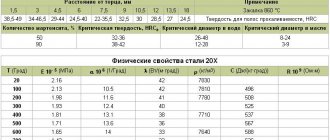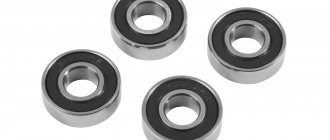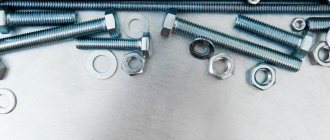General information about sandpaper
Sandpaper or sandpaper is a carpentry abrasive applied to a fabric or other flat thin base, which is intended for machine or manual processing of metal, wood, and ceramic surfaces. This material is made by impregnating the base with polymers, then applying heated glue and abrasives of the required fraction (required size). After drying in an oven at a certain temperature, the sanding paper becomes suitable for use.
Since sandpaper can be made rough or almost smooth, special markings are used for convenience. Previously, this parameter was determined according to the GOST 3647-80 standard, which determines the grain size of the sandpaper (the number of grains of different sizes per square unit of sandpaper area). Nowadays, international ISO standards are used, which still have something in common with the old state (domestic) ones.
According to modern rules, grain size is designated using the letter “P”. A number is placed next to it, by which the size of the “grains” is determined: the larger the numerical designation, the finer the sandpaper.
Correspondence table between foreign and domestic markings of sandpaper Source derevo-s.ru
For the GOST designation, other markings apply. Before the letter there is a number that indicates the size of the sieve with a certain side of the mesh. For example, the “grain” of “10-N” sandpaper corresponds to a sieve with a mesh size of 10 microns. The opposite rule applies here: the lower the indicator, the smaller the crop size.
See also: Catalog of companies that specialize in finishing materials and related work
Documentation
Grinding and polishing materials on a paper-like carrier or wicker base are produced in light of the requirements of regulatory documents:
- GOST 6456-82 Sanding paper.
- GOST 13344-79 Waterproof fabric sanding paper.
- GOST 5009-82 Sanding paper and fabric sandpaper and other documents.
The rules for production, grain size, and application are described. The explanation of the marking (designation) of sandpaper is given.
Designation, name
To properly use abrasive material, you need to know about its properties and purpose. For this purpose, an inscription containing information about the abrasive is imprinted on the reverse side with indelible paintwork.
Designation according to GOST: L2E700×110S1G15A25-NMA GOST4, where
- Construction type of abrasive material:
- L – in sheets; for roll, there is no abbreviation.
It often happens that a seemingly insignificant thing turns out to be truly irreplaceable, and its scope of application is quite wide. Sandpaper is just one of these necessary things. It is also called sandpaper or sandpaper. It is the most popular abrasive, for which there is no alternative today. Every furniture maker, mechanic, sculptor, as well as car painter and any good owner needs it.
Sandpaper-zero
“Null” sandpaper is the most delicate sandpaper with the least abrasive coating. According to the international standard, such paper has a rating from P400 to P2500 and is used for final and ultra-fine grinding of coatings:
- P2500 (M5/N-00) has a grain size of 3-5 microns;
- P2000 (M7/N-01) – 5-7 microns;
- P1500 (M10/N-0) – 7-10 µm;
- P1200 (M14) – 10-14 microns;
- P1000 (M20/N-1) – 14-20 µm;
- P600 (M28/N-2) – 10-14 µm;
- P400 (M40/N-3) – 10-14 microns.
This is interesting! The grain size of the “zero” is so small that it is practically not noticeable to the touch.
Monotonous but necessary work with “zero” Source usamodelkina.ru
How does abrasive work?
If we consider the entire woodworking process, then almost all operations here involve cutting. This statement is true for sawmills, miter saws, milling, and drilling. Shearing is also the processing of parts on jointing, thicknessing and four-sided machines. Sanding is no exception here. Each grain of abrasive is a mini-cutter, the only question is the size of the grain.
Laser distance meter: use and selection criteriaHome-made tool for sharpening drillsCharacteristics and types of electric saws for womenDo-it-yourself tools for a wood router
Types of abrasives. When sandpaper first appeared, natural abrasives were used in its production - sand, corundum, diamond, emery (a natural mixture of magnetite with corundum) and even pumice, but over time they were replaced by artificial materials (silicon and boron carbides, artificial diamonds, electrocorundum, CBN ).
The reason for this replacement was that artificial materials have greater hardness, and therefore longer service life. Today, the most commonly used abrasive tool in the production is electrocorundum, which is a modification of aluminum oxide with an admixture of chromium oxide. Despite the fact that it is inferior in abrasive ability to diamond and CBN, it has an optimal price-quality ratio.
Areas of application of zero sandpaper
Nulevka sandpaper has been successfully used for a long time in the construction and repair industry, as well as in the manufacture of furniture, interior accessories and other parts. It is worth listing several areas of application of this material:
- furniture;
- carpentry;
- paintwork;
- automotive repair industry;
- industrial;
- finishing;
- mechanical engineering;
- construction;
- instrument making;
- production of specialized industry equipment, fixtures and instruments (including non-standard, manual and machine ones).
It is important! “Nulevka” can be produced in both sheet and roll form.
Release form
The finished product is available in several forms.
Available in the form of sheets or rolls. The leaf shape is characteristic of large fractions that are difficult to bend or roll. Fine-grain paper is available in roll form. In addition to these forms, there are also:
- abrasive mesh;
- abrasive wheels;
- sanding belts.
The form can be intended for installation in a specific mechanism for processing parts and have a specific appearance.
Features of sandpaper manufacturing
The abrasive, which is the working part of the scratch, can be applied to a base of different composition. For example, on paper or fabric. The history of the production of any sandpaper goes back to ancient origins, which date back to the thirteenth century. At the same time, the first mentions of such material appeared in China. Previously, specialists in the production of sandpaper of different grain sizes added crushed shell rock, seeds of various plants, an adhesive composition, as well as agar-agar or starch for the gluing effect.
Making sandpaper Source kak-sdelano.ru
The paper base of the sandpaper gives a low level of wear resistance and water resistance, and is marked as follows: P1, P2, P3 and so on (an example of GOST product marking is given). The fabric base of the sandpaper (fabric-based sandpaper) guarantees increased durability and does not allow the product to crumble after the first serious processing of various non-smooth surfaces. Not only a more durable base made of natural cotton or artificial polyester helps here, but also the presence of a special resin impregnation. Wet-resistant paper is designated for sandpaper with different abrasive abilities as the letter “L”.
Also important for scratch sandpaper with a grain size of 400-2500 (according to the international method for determining the abrasiveness of this grouting material) is the method of applying the active surface to the base. This can be an open or closed method. In the first case, the user receives sanding paper with a half-covered base; in the second, the base lining is completely covered with abrasive material.
Type of abrasive application
The characteristics of sandpaper also depend on how the abrasive was applied to the substrate. There are two types of application. For different types of processing, one of them will be preferable.
Semi-open or open fill
Sandpaper with this type of abrasive application is characterized by the presence of large gaps between the particles. These gaps can take up 50% of the entire surface of the paper. This sandpaper is used for processing soft materials that do not leave behind lumps from the removed layer.
Closed or continuous fill
If you need to process any hard material, it is better to use sandpaper with a continuous coating of abrasive. The absence of gaps makes processing more convenient and the sandpaper itself more durable.
Solid filling is used for metal parts, as well as polymers or ceramics.
General rules for using sandpaper
Sandpaper for grinding, that is, zero (as well as other abrasive versions of sandpaper) is used with a base of different processing techniques. So, when marked with the letter “J”, it becomes clear that such sandpaper should be used for grinding the edge or profile. Heavy work with a high degree of contamination is carried out using material with the letter “X”.
As for letters such as “W” and “Y”, which are used for marking, they signal to the user that this product has a higher level of strength and is suitable for a stronger impact.
This is interesting! The basic rule for choosing a suitable sandpaper (including from the “zero” line) remains the rule of moving from the minimum grain size to the maximum.
Base material
The base is an equally important characteristic that indicates the purpose of the skin. Preferences depend on the purpose of use. The abrasive can be made from three types of material:
- Paper. The cheapest option, but able to withstand heavy loads. Has water-resistant properties. The bulk of fine-grained skins are produced on a paper basis.
- Textile. A more wear-resistant option compared to the previous one. For moisture resistance, they are impregnated with special resins. The fabric base gives the skin elasticity.
- Combined (two-layer) canvas made of paper and fabric. This base combines all the properties of paper and fabric. It has strength, wear resistance and elasticity. Coarse-grained emery is produced on a combined basis.
Briefly about the main thing
Zero sandpaper is one of the many types of sanding or sanding finishing paper.
Zeroing is used in construction and finishing works, as well as in the production of piece (single) or flow (factory) products of different editions.
Sandpaper (except for grit) can be fabric, paper or a combination (depending on the base on which the abrasive material is applied).
According to state Russian and international standards, different sandpaper is manufactured under different (corresponding to the type) markings, which may contain both numbers and letters.
You can determine which sandpaper is in front of you by looking at the markings on the packaging or by touching the working surface of the material.
Ratings 0
Russian GOST marking
When purchasing sandpaper, you should always pay attention to the markings. It contains information about the product. On sale you can find skins marked with both the new GOST and the old one.
New GOST
The new GOST implies the designation of grain size, as well as some additional properties described above. The letter “P” comes first, followed by a number indicating the grain size of the paper. After this, one of several markings can be added that are responsible for moisture protection or the rigidity of the material being processed.
Old GOST
The old markings will look different. Standard sandpaper is marked first with a number indicating the grain size, and then with the letter “P”, “N” or “D”. These letters indicate the quality of the abrasive used to create the sandpaper.
Fine-grained skins are marked differently. The letter “M” is placed first, followed by the size of the abrasive in micrometers (µm).
